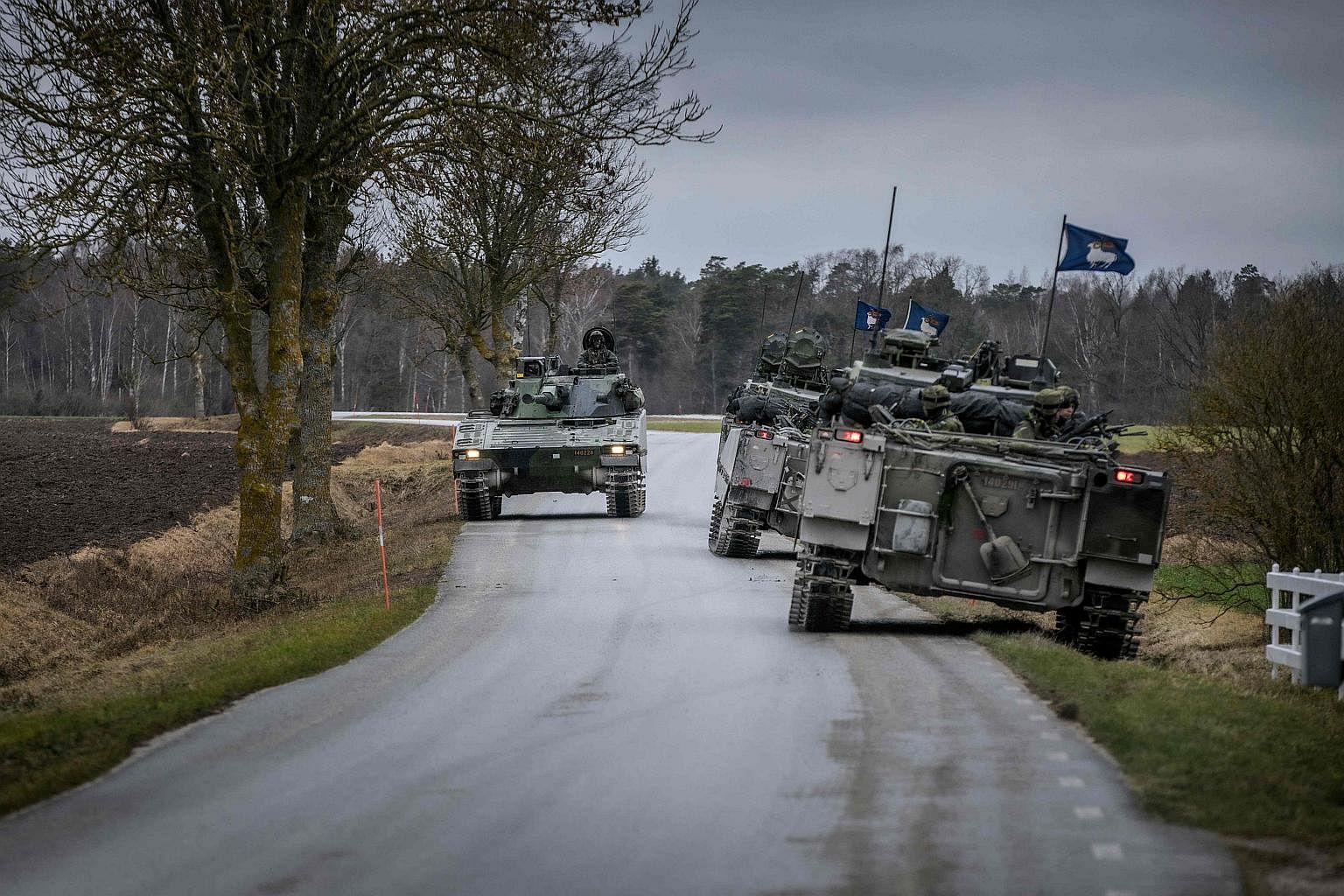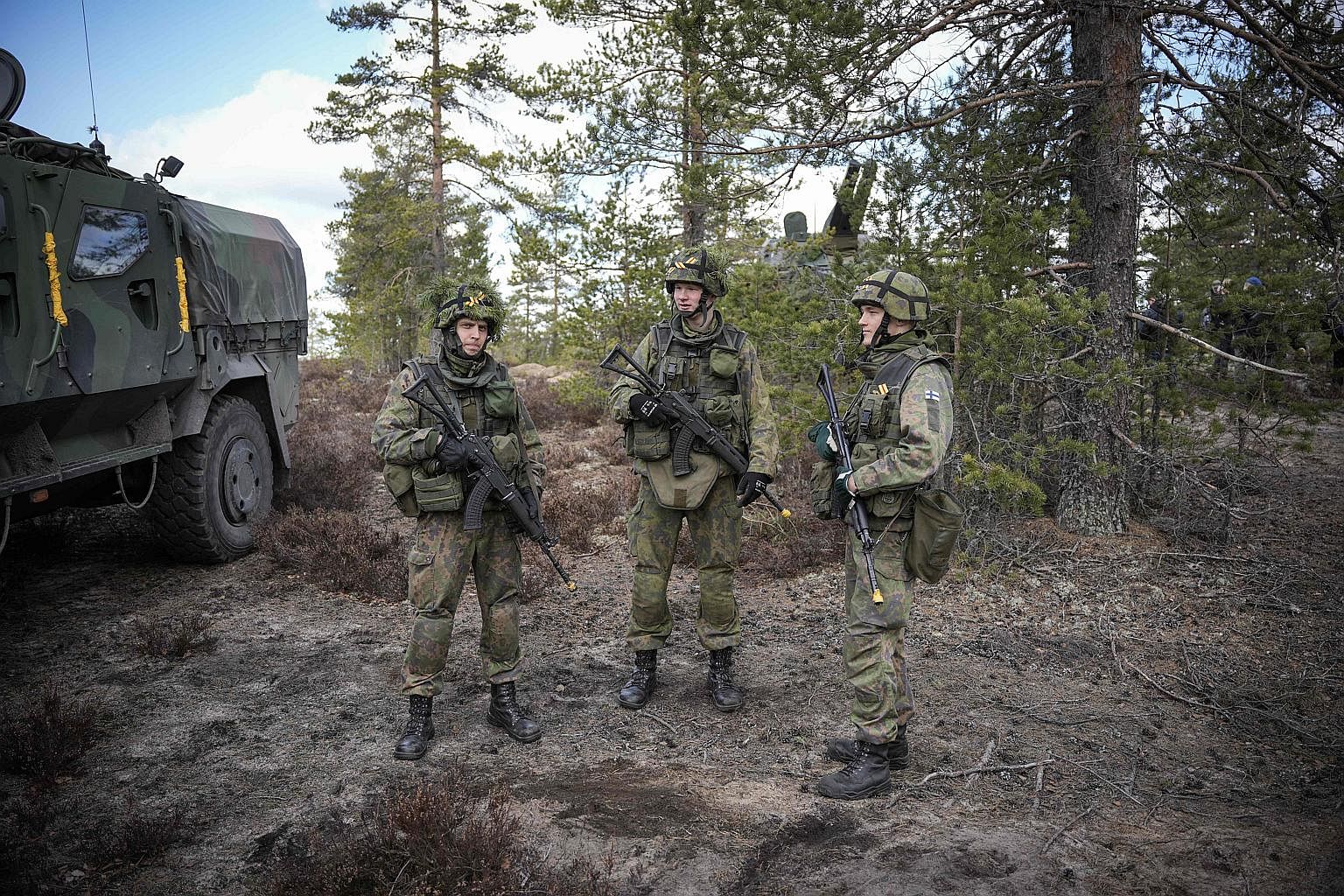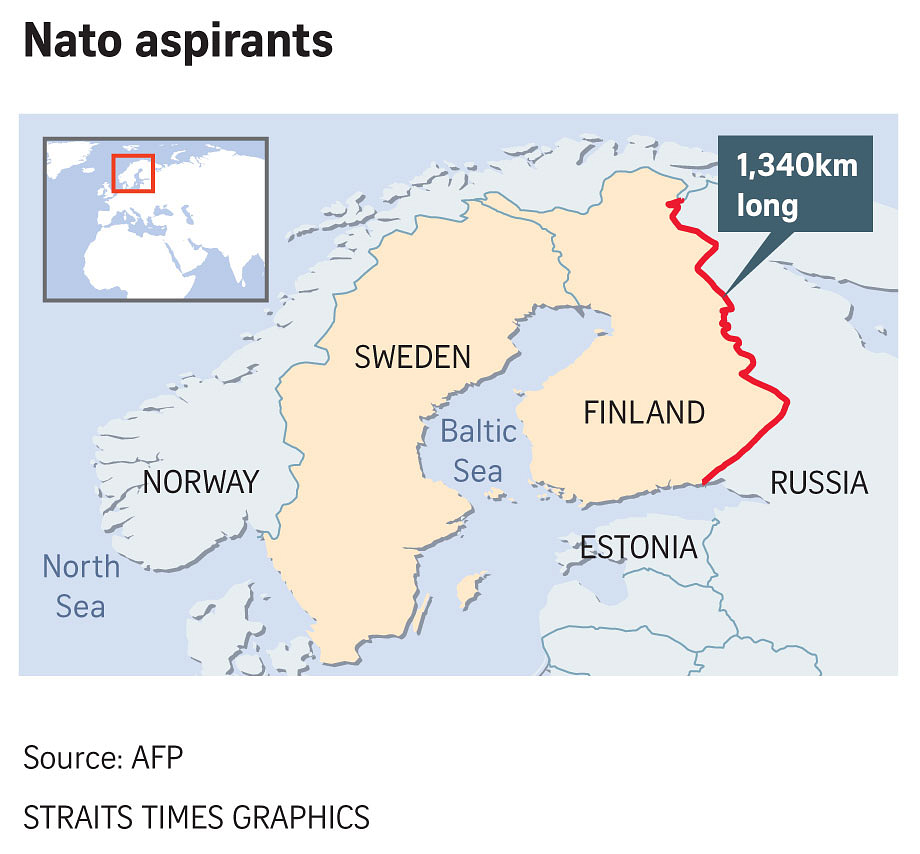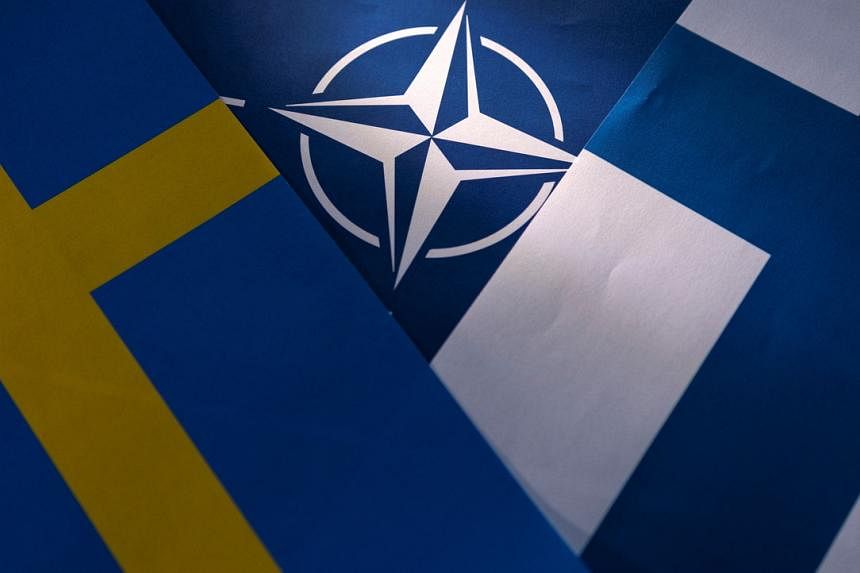HELSINKI (AFP, REUTERS) - After decades of staying out of military alliances, Finland and Sweden this week decide whether they apply to join Nato as a deterrent against aggression from eastern neighbour Russia.
Helsinki announced on Thursday (May 12) it was going ahead with the application. Stockholm is set to make a decision on its own membership on Sunday.
Sweden is likely to follow Helsinki's footsteps, with both expressing a desire for their applications to be submitted simultaneously if they decide to go that route. Sweden would also not want to be the only Nordic country outside the Nato umbrella.
Here are some things to know about the two countries:
Geography
Finland borders Sweden, Norway and Russia, with whom it shares a 1,300km border. Its capital, Helsinki, occupies a peninsula and some surrounding islands in the Baltic Sea.
Sweden shares land borders with Norway and Finland. Denmark sits across the sea from Sweden in the south-west. Sweden's capital Stockholm is built on 14 islands and the country as a whole counts thousands of coastal islands as part of its territory.
Strained history with Russia
Sweden's and Finland's difficult past with Russia goes back to 17th and 18th centuries when tsars of the Russian Empire repeatedly tried to conquer Finland, then a hinterland of the Swedish kingdom.
King Charles XII of Sweden invaded and conquered parts of Russia in the early 18th century but lost a battle in Poltava, in today's Ukraine, to tsar Peter the Great. It marked the end of Sweden as a major power in Northern Europe.
Sweden lost Finland to Russia in a war in 1809, turning Finland into an autonomous part of the Russian empire, the Grand Duchy of Finland. In the chaos resulting from the Russian Revolution in 1917, Finland declared its independence on Dec 6 that year.
Sweden's military
For a long time, Swedish policy dictated that the country needed a strong military to protect its neutrality.
But after the end of the Cold War, it drastically slashed its defence spending, turning its military focus toward peacekeeping operations around the world.
In 1990, defence spending accounted for 2.6 per cent of GDP, compared to 1.2 per cent in 2020, according to the government.

Mandatory military service was scrapped in 2010 but reintroduced in 2017 as part of Sweden's rearmament following Russia's 2014 annexation of Crimea.
Combining its different branches, the Swedish military can field some 50,000 soldiers.
In March 2022, after Russia's invasion of Ukraine, Sweden announced it would increase spending again, targeting 2 per cent of GDP "as soon as possible".
Finland's military

While Finland has also made some defence cuts, in contrast to Sweden it has maintained a much larger army since the end of the Cold War.
The country of 5.5 million people now has a wartime strength of 280,000 troops plus 600,000 reservists, making it significantly larger than any of its Nordic neighbours despite a population half the size of Sweden's 10.4 million people.
In early April, Finland announced it would further boost its military spending, adding more than €2 billion (S$2.9 billion) over the next four years. It has a defence budget of €5.1 billion for 2022.
Memories of war
While Sweden has sent forces to international peacekeeping missions, it has not gone to war for over 200 years.
The last conflict it fought was the Swedish-Norwegian War of 1814. It maintained its neutral stance through the two World Wars.
Finland's memories of warfare are much fresher. In 1939, it was invaded by the Soviet Union.
Finns put up a fierce fight during the bloody Winter War, which took place during one of the coldest winters in recorded history. But it was ultimately forced to cede a huge stretch of its eastern Karelia province in a peace treaty with Moscow.
A 1948 "friendship agreement" saw the Soviets agree not to invade again, as long as Finland stayed out of any Western defence cooperation.
The country's forced neutrality to appease its stronger neighbour coined the term "Finlandisation".


